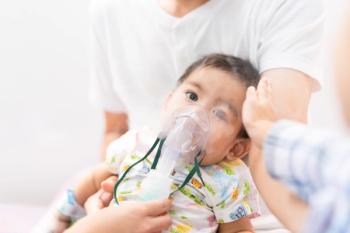
- Consultant for Pediatricians Vol 6 No 10
- Volume 6
- Issue 10
Varicella
One week after vaccination with diphtheria, tetanus, and acellular pertussis/inactivated poliovirus/hepatitis B, Haemophilus influenzae type b, pneumococcal conjugate, and rotavirus, this 2Z\x-month-old infant presented with a vesicular rash. No other children in the home had a rash. The infant's primary caregiver was the grandmother, who had shingles 2 weeks earlier.
One week after vaccination with diphtheria, tetanus, and acellular pertussis/inactivated poliovirus/hepatitis B, Haemophilus influenzae type b, pneumococcal conjugate, and rotavirus, this 2Z\x-month-old infant presented with a vesicular rash. No other children in the home had a rash. The infant's primary caregiver was the grandmother, who had shingles 2 weeks earlier.
Varicella-zoster virus, a herpes virus, causes 2 distinct clinical diseases: varicella (chickenpox) and herpes zoster (shingles). Adults with shingles can infect susceptible children via contact with vesicular fluid, which contains an enormous load of virus particles. In infants, varicella usually has a benign course and does not require treatment.
Because this infant had chickenpox, vaccination after his first birthday may not be required. Consultation with a local infectious disease specialist may provide further clarification.
Treatment of a newborn with varicella-zoster immunoglobulin may be required if a rash develops in the mother within 5 days before or 2 days after childbirth. If varicella lesions subsequently develop in the infant, acyclovir should be administered promptly.1,2 *
References:
REFERENCES:
1.
Sauerbrei A, Wutzler P. Neonatal varicella.
J Perinatol.
2001;21:545-549.
2.
American Academy of Pediatrics. Varicella-zoster infections. In: Pickering LK, Baker CJ, Long SS, McMillan JA, eds.
Red Book: 2006 Report of the Committee on Infectious Diseases.
27th ed. Elk Grove Village, Ill: American Academy of Pediatrics; 2006:711-725.
Articles in this issue
about 18 years ago
Bell Palsy From Lyme Meningitisabout 18 years ago
Coronal Hypospadiasabout 18 years ago
ADHD: More Prevalent Than We Thought?about 18 years ago
Chronic Recurrent Multifocal Osteomyelitis: REFERENCES:about 18 years ago
Vaccine-Associated Herpes Zosterabout 18 years ago
Incontinentia Pigmenti and Hypomelanosis of Itoabout 18 years ago
Geographic Tongueabout 18 years ago
Green-Colored StoolNewsletter
Access practical, evidence-based guidance to support better care for our youngest patients. Join our email list for the latest clinical updates.










